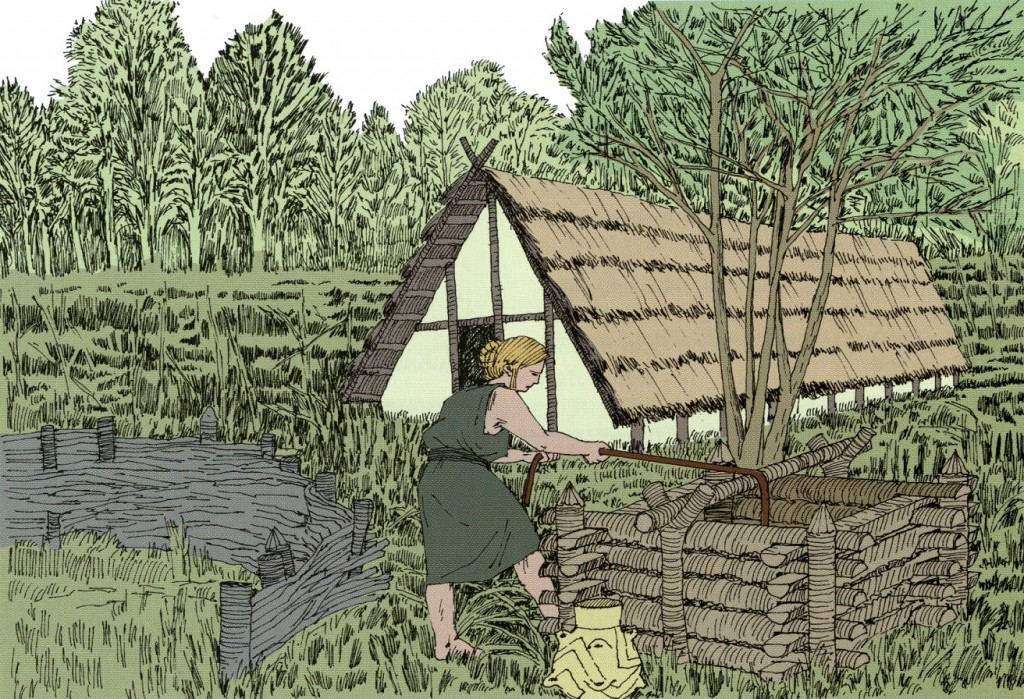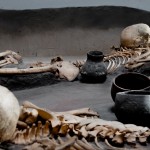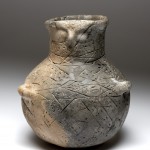The Neolithic: 6,000 – ca. 3,000 years BC

From Hunting and Gathering to Agriculture and Animal Husbandry
You might ask yourself how Neolithic farmers lived in Thuringia. In the ALT you can step into a reconstruction of a thatched post-built house, with its mighty oak posts and adobe-coated, half-timbered walls. The reconstruction is based on a the remains of a structure excavated in Rudisleben (Municipality of Ilm).
Around 6,000 years BC a new way of life and new subsistence practices, that had their origins in Asia Minor, became established in Thuringia. This was such a titanic change for human society that it is referred to as the “Neolithic Revolution”. People began to capture wild animals, to tame them, and to use them as sources of meat. For the first time people kept and bred animals that we still know today. They also sowed crops and became farmers, practising agriculture. In the ALT you can see seed imprints in pottery containers. These provide us with information about the food crops of Neolithic farmers, among which were einkorn and emmer wheat, spelt, common wheat, barley, flax, carrots, peas, and lentils.
Animal husbandry and agriculture were cultural accomplishments that were prerequisites for a sedentary way of life. A sedentary lifestyle led to the building of houses with the result that villages formed. Our diorama of a village belonging to the earliest sedentary groups, from Çatalhöyük in Turkey, dating to ca. 7,300 BC, transports you back to the beginning of the Neolithic Revolution.
The Neolithic is also an era of mastery of specialised crafts. Now that people had a permanent roof over their heads and more time became available, they could produce the tools necessary for agriculture and building. Tried and tested technologies, including spinning, weaving, and stone boring and sharpening, were perfected or even re-invented. Pottery was an example of such re-invention and it was pottery, and in particular the style in which it was decorated, that gave its name to the culture of the first farmers and graziers in Thuringia: the Linear Pottery Culture. The cultures that followed – named after find sites or predominant styles and forms of containers – include the Roessen Culture and the Funnel Beaker Culture. Outstanding artefacts, such as globular cups, bottles, and round-bottomed jars can be admired in the ALT.
Neolithic burial customs give profound insights into the beliefs of our ancestors and reflect social structures. The ALT displays striking archaeological evidence, including the crouched inhumations and cremated burials from Wandersleben, a reconstruction of a chamber tomb, and finds from the burial mound at Kalbsrieth.



